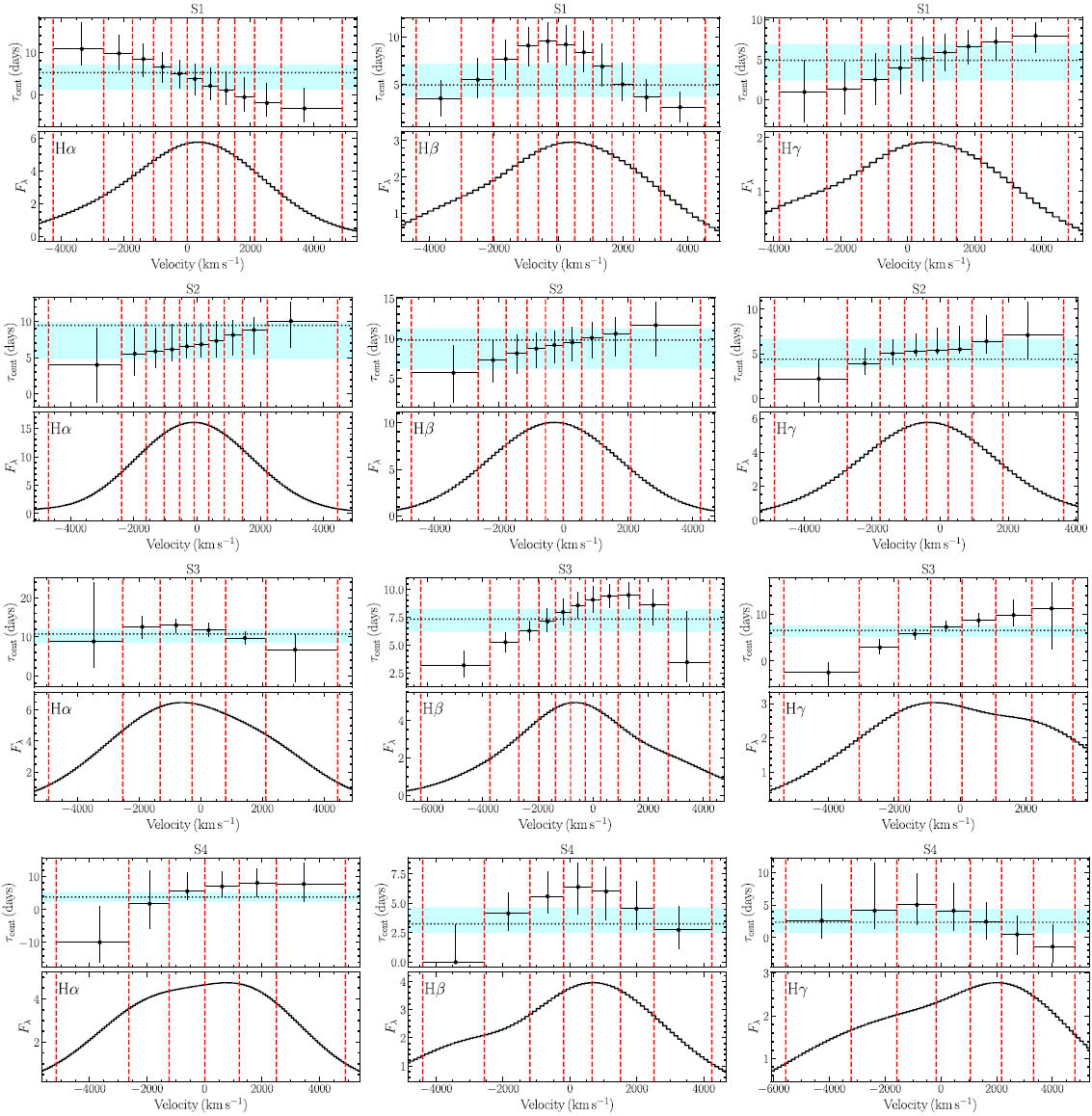Dr. FENG Haicheng from the Yunnan Observatories of the Chinese Academy of Sciences, along with his collaborators, have made progress in the study of the geometrical and kinematical evolution of the broad-line region (BLR) in active galactic nuclei (AGN). Their findings were published in The Astrophysical Journal.
AGN are among the most luminous objects in the universe, powered by the accretion of matter onto supermassive black holes (SMBHs) at their centers. The BLR, located near the SMBH, is a region of high-velocity ionized gas responsible for producing broad emission lines in the ultraviolet and optical spectra of AGN. These lines, with widths exceeding 1000 km/s, are generated through photoionization driven by the accretion disk's radiation. Understanding the geometry and kinematics of the BLR is essential for probing the physical processes within AGN and for accurately estimating the masses of their central black holes. However, the complex kinematics and spatial distribution of the BLR gas have remained poorly understood.
Theoretically, BLR gas can exhibit virialized or inflow motions under the influence of the SMBH's gravity, or outflow motions driven by radiation pressure. It is anticipated that outflows would be more prominent in high-accretion-rate AGN. Nevertheless, observational evidence supporting this has been mixed. One possible explanation is that the ionization properties of the BLR vary significantly among AGN, leading to differences in the impact of radiation pressure on the gas.
To address this issue, the researchers proposed studying a single AGN at different brightness states to eliminate uncertainties caused by source-to-source variations. In 2020, the researchers conducted a four-year reverberation mapping (RM) campaign on the well-known changing-look AGN NGC 4151, using the 2.4-meter telescope at the Lijiang Observatory. Their findings revealed clear stratification in the BLR of NGC 4151, with different emission lines originating from distinct radial regions within the BLR.
Additionally, the researchers observed an unusual phenomenon termed the "anti-breathing effect" in NGC 4151. According to conventional models, an increase in AGN luminosity should cause the BLR radius to expand, leading to longer time delays for broad emission lines (known as the "breathing effect"). However, their observations showed the opposite: as the AGN’s brightness increased, the time delays of the broad emission lines shortened. This anti-breathing effect may be linked to time delays between the ultraviolet and optical continuum variability in the AGN.
Further analysis of velocity-resolved time delays revealed that the geometry and kinematics of the BLR in NGC 4151 underwent significant changes on timescales of less than one year. These rapid changes cannot be fully explained by inhomogeneous gas distributions, variations in radiation pressure, or changes in the ionizing radiation field alone. The findings suggest that the BLR's physical properties are more complex than previously thought and may be influenced by multiple mechanisms working in tandem.

Figure 1: Velocity-resolved time delays for different observing seasons. From left to right, the columns show the results for Hα, Hβ, and Hγ. In each panel, the bottom displays the rms spectrum, while the top shows the time delays for different velocity bins (separated by red dashed lines). The blue shaded region represents the overall time delay of the emission line and its uncertainty range. Image by FENG.
Contact:
FENG Haicheng
Yunnan Observatories, CAS
E-mail: hcfeng@ynao.ac.cn